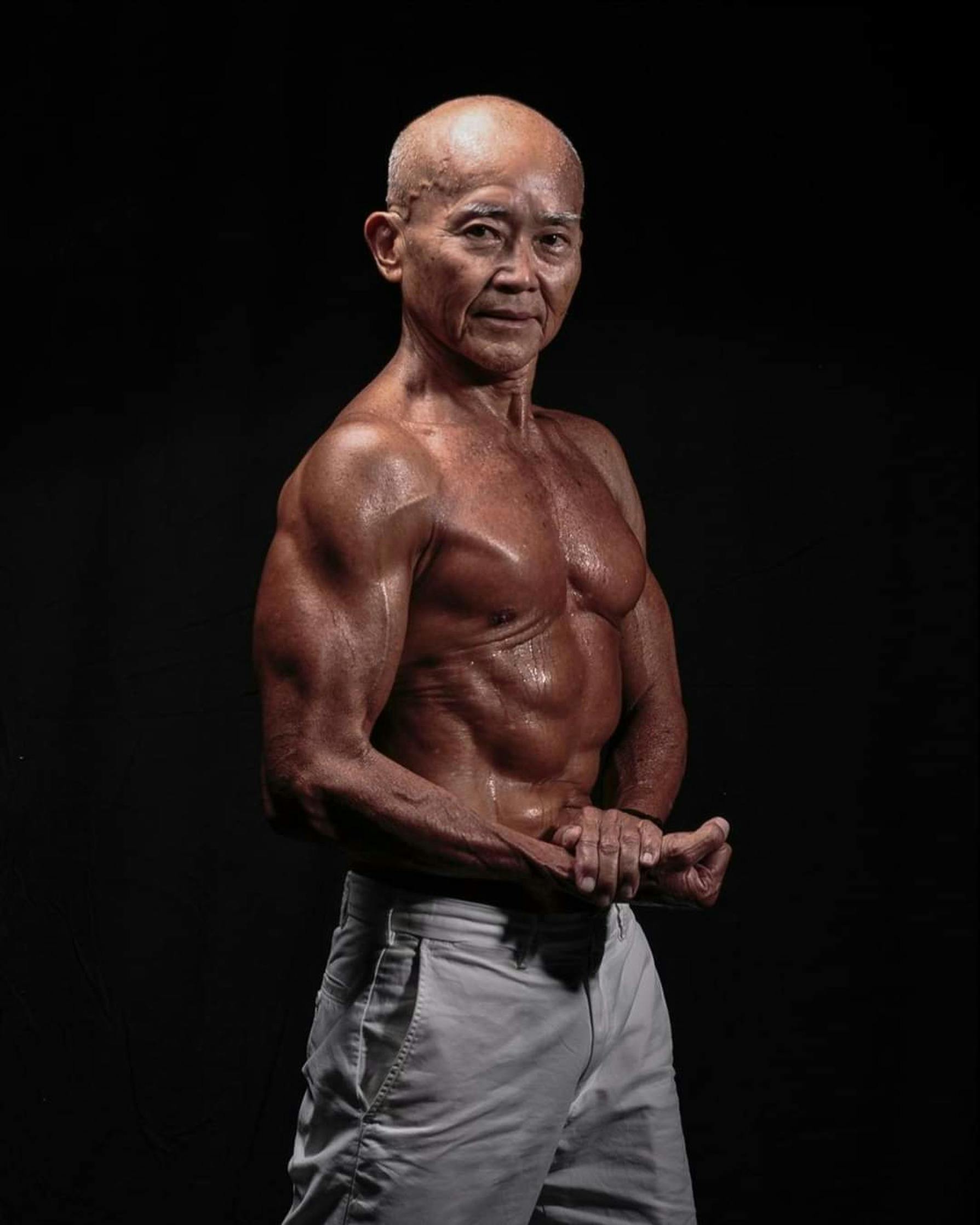What is Blood Flow Restriction training?
Blood Flow Restriction (BFR) training is a relatively new type of exercise that has been rapidly gaining popularity in recent years. It is also known as occlusion training, or occlusion cuff training. BFR training involves applying tourniquet-like cuffs to a limb while performing exercises. The resulting restriction of blood flow causes a build-up of metabolic by-products in the muscle, leading to increased in muscle development and strength. Let’s explore the mechanisms behind BFR training and its potential for athletes and individuals looking to improve their physical fitness, alongside other benefits.

We don’t actually know if he did BFR training, but those tourniquets certainly gave him a pump
How BFR training works
BFR training works by applying a dedicated tourniquet, also known as a BFR cuff or occlusion cuff, to a limb (typically the upper arm or thigh) during exercise. This restriction of blood flow causes a build-up of metabolic by-products such as lactate and hydrogen ions in the muscle. The resulting increase in metabolic stress provokes muscle development. BFR training is typically performed at a lower intensity (20-30% of 1RM) than traditional resistance training, meaning that it is less demanding on the body and less likely to lead to injury. The reduced weight means reduced risk of injuring joints and tendons.
What exactly is a BFR device?
A BFR (Blood Flow Restriction) device / BFR cuff / occlusion cuff is a type of mechanised tourniquet used to restrict blood flow to a limb during exercise. Occlusion devices are typically made of elastic material and are applied around the upper arm or thigh, and can be adjusted to provide a specific level of restriction. Occlusion cuffs are designed to be used primarily during resistance exercise, ideally in conjunction with low-load exercises. There are many different types of BFR device available in the market – some of them are straps and tourniquets, but we recommend using pneumatic cuffs designed specifically for occlusion training. The devices usually come in different sizes and adjustable to provide the appropriate level of restriction for each person’s needs. Again – while you may see / hear of people using simple tourniquets to do BFR, we highly recommend you use a dedicated BFR cuff rather than a self-made tourniquet, to be as safe as possible.
Potential benefits of BFR training
BFR training has been shown to have beneficial effects both for athletes and individuals looking to improve their physical fitness. One of the main positive effects of BFR training is boosted muscle development and also greater strength, even though the resistance exercise is performed at lower intensity than traditional resistance training. The boosting effect is due to the increased metabolic stress caused by the restricted blood flow. BFR training has also been shown to improve cardiovascular fitness, even helping to decrease muscle soreness after exercise.
BFR training is used for rehabilitation of injuries
BFR training has also been used as an effective tool in rehabilitation, it has been shown to help individuals recovering from injuries or surgeries. As mentioned, BFR training allows you to perform exercises at a lower intensity while still promoting muscle hypertrophy and simultaneously boosting strength. The reduced weight / intensity helps improve range of motion while keeping injury risk low, yet reducing muscle atrophy, thus speeding up the recovery process.
Safety concerns around BFR training
While BFR training is generally considered safe, there are safety concerns that should be taken into account. One is that restriction of blood flow can increase the risk of deep vein thrombosis (DVT). Therefore, we advise you consult a healthcare professional before starting BFR training, especially if you have a history of DVT or other blood clotting disorders. Additionally, it’s important to use the proper technique and equipment, such as a BFR cuff / occlusion cuff / device, and to not overtighten it, as this can lead to nerve or tissue damage.
The final verdict on BFR training
BFR training is a fairly recently devised variety of training, which has enjoyed increased interest and popularity only in the last few years. It is a proven method of achieving muscle gains and added strength while training at a lower intensity than usual, by means restricting blood flow. BFR training has numerous potential benefits for weightlifters, athletes and indeed anyone looking for a boost for muscle growth without straining joints, muscles and ligaments by lifting too much weight. It also has been proven an effective tool in rehabilitation of injuries. However we do recommend you talk to a doctor before starting BFR training and to use proper technique and equipment to avoid any potential risks.





